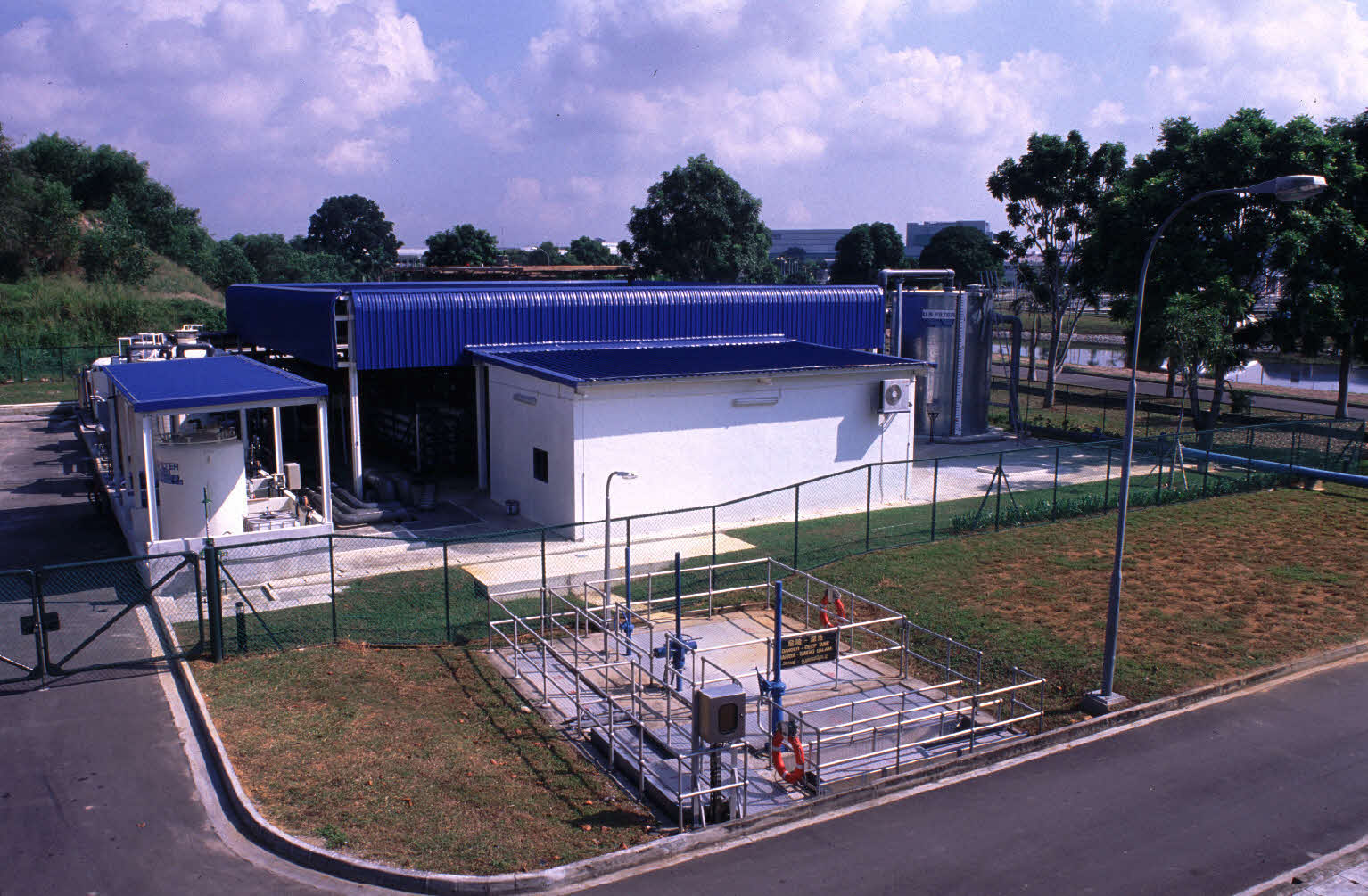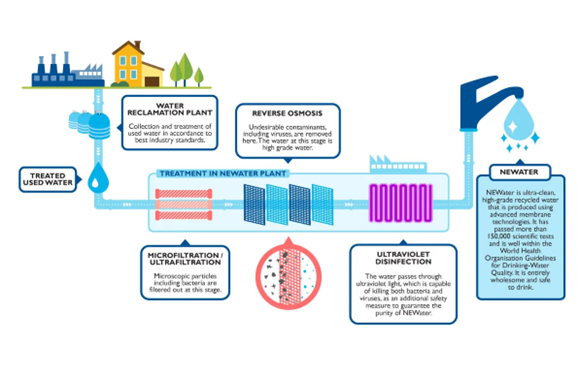The NEWater process recycles our treated used water into ultra-clean, high-grade reclaimed water, cushioning our water supply against dry weather and moving Singapore towards water sustainability.
There are currently 4 NEWater plants in operation.
NEWater’s genesis dates back to the 1970s, when the Singapore government commissioned a study to determine the feasibility of producing reclaimed water. Although the study found it was technically possible, the technology’s high cost and unproven reliability then were insurmountable concerns.
By the 1990s, however, membrane technology’s cost and performance had improved considerably. Other countries such as the United States were also increasingly using it for water treatment and reclamation.
In 1998, PUB set up a team to test the latest proven membrane technology’s use in water reclamation for potable purposes. Two years later, we commissioned a full-scale demonstration plant that could produce 10,000 cubic metres daily.

The demonstration plant built in 2000 to validate the membrane technology on a larger scale.
The high-grade, reclaimed water was named NEWater, and a battery of tests and audits showed it was a safe and sustainable water source.
An international group of experts in engineering, biomedical sciences, chemistry and water technology also found that NEWater’s quality was consistently safe and high and well within the World Health Organisation’s (WHO) and United States Environmental Protection Agency’s (USEPA) requirements for drinking water. They recommended it for indirect potable use, which involves introducing NEWater into raw water reservoirs. The blended water undergoes naturalisation and further treatment in conventional waterworks to create drinking water.
On 9 August 2002, we launched NEWater to the Singaporean public when 60,000 people toasted the nation’s birthday at the National Day Parade with bottles of NEWater. In the following year, we officially opened the first two NEWater plants at Bedok and Kranji, and the NEWater Visitor Centre, a water museum to showcase our journey towards water sustainability.
The Bedok NEWater Factory and NEWater Visitor Centre closed on 31 July 2024, and a closing ceremony was held in September 2024. From a daring dream in the 1970s to a cornerstone of our nation's water security today, NEWater embodies the spirit of our nation’s innovation and resilience. Watch the video below to hear from some of our pioneers as we celebrate this remarkable journey!

Stage 1 – Microfiltration/Ultrafiltration
Typically, the first stage of the NEWater production process is known as Microfiltration (MF) or Ultrafiltration (UF). In this process, the treated used water is passed through membranes to filter out microscopic particles and bacteria.
PUB has been adopting the membrane bioreactor (MBR) technology for water reclamation. MBR is a 3-in-1 solution that combines conventional bioreactors, secondary sedimentation tanks and MF/UF in one single step. Hence, the MF/UF process can be replaced by the single-step MBR process, where applicable.
Stage 2 – Reverse Osmosis
The second stage of the NEWater production process is known as Reverse Osmosis (RO), where a semi-permeable membrane with very small pores is used. This allows water molecules to pass through while leaving contaminants, such as viruses, bacteria, heavy metals, aromatic hydrocarbons, pesticides, etc., behind.
Stage 3 – Ultraviolet Disinfection
After the RO stage, the water is already of a high-grade quality. The third stage of the NEWater production process is Ultraviolet (UV) Disinfection which inactivates any last traces of bacteria and viruses. This process acts as an additional safety measure to guarantee the purity of NEWater.
| Non-potable Use | As it is ultra-clean, NEWater is used mainly for industrial and air-con cooling purposes at wafer fabrication plants, industrial estates and commercial buildings. The biggest users of NEWater are wafer fabrication plants, which require water quality that is even more stringent than water for drinking.
NEWater is delivered to industrial customers via a dedicated pipe network. |
| Indirect Potable Use | During dry periods, NEWater is added to our reservoirs to blend with raw water. The raw water from the reservoir is treated at the waterworks before it is supplied to consumers as tap water. |